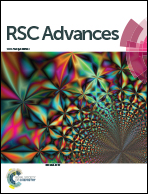Degradation of battery separators under charge–discharge cycles
Abstract
Researchers have reported on the electrochemical aging of lithium-ion batteries. The mechanisms of battery capacity loss, such as consumption of electrolytes and fading of electrodes, commonly seen as fracture of coatings, have been studied intensively. The widely used polymeric separators sandwiched between cathode and anode, which do not directly contribute to the electrochemical properties of the cell, are usually taken as chemically, thermally and structurally stable materials. In this paper, the degradation of a dry processed trilayer separator due to charge–discharge cycles is investigated. It has been found that the separators that underwent higher cycles failed at lower lateral punch force and smaller deformation. Live cell tests also indicate that the deformation and force intensity at the onset of short circuit decreased for a cell after 1200 cycles compared to those for a non-cycled cell, when under lateral indentation. Different characterization methods were used to understand this charge–discharge induced mechanical aging. SEM through-thickness views of the separators show no significant pore size change, but reaction products accumulated in pores of the separator middle layer. FTIR (Fourier Transform Infrared) examination of the surfaces of those separators shows there was no apparent chemical bond change on the surface of the separator during charging and discharging process.



 Please wait while we load your content...
Please wait while we load your content...